Dining Review: Maido, Lima Peru
Lima is known as being one of the best food cities in South America, so of course I based most of my plans around eating. Unfortunately, I was in Lima for a Sunday and Monday, so Astrid y Gaston wasn’t open while I was there, but I did check out Maido and Central. This is a review of Maido, a Japanese-Peruvian restaurant.
Like Astrid y Gaston, Maido isn’t open for dinner on Sundays, but it is fortunately open for lunch, so I booked a late lunch and the Nikkei experience. I made my reservation less than a week in advance, but I was there in January and aiming for a late lunch.

The restaurant was busy when I arrived, full of relatively loud groups of people enjoying a leisurely lunch. I ended up sitting at the bar as I was by myself, which did give me a chance to see some of the food being prepared. A server came up to me to reconfirm that I wanted to do the Nikkei experience, which I think is pretty uncommon for people to do at lunch. Because I was eating on a Sunday at lunch, I think they also made a number of substitutions for ingredients.
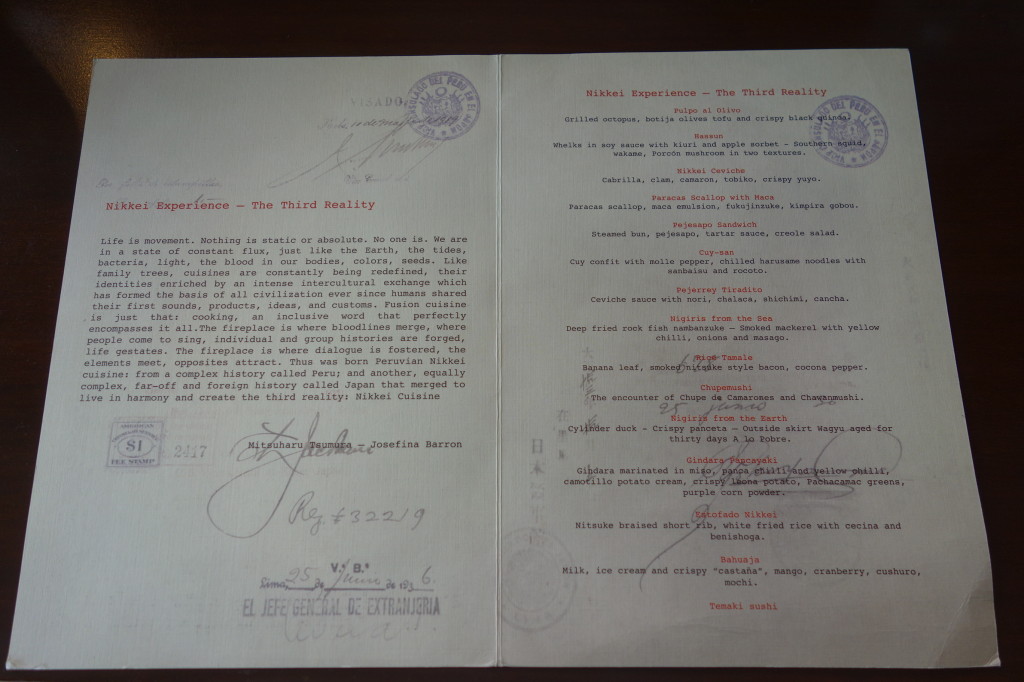
The first course was grilled octopus and a piece of black olive tofu. I’m not a huge fan of the flavor of olives, but there was a great contrast of textures between the chewiness of the octopus and the creaminess of the tofu and the crunch of the quinoa on top of the tofu.
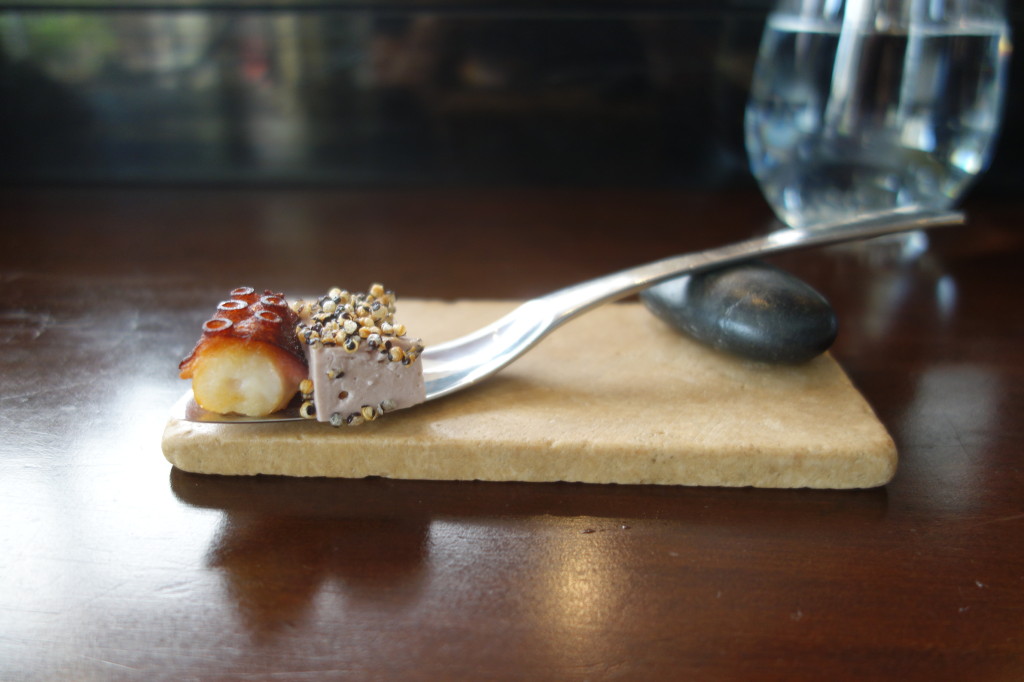
Next up was a mushroom cracker and a whelk served in the shell covered in apple sorbet. The mushroom cracker was absolutely delicious. The whelk was a bit unwieldy to eat as the whelk was quite large and the sorbet was cold (duh), but it was a good combination of sweetness from the sorbet and sea from the whelk once you got past the contrasting temperatures.
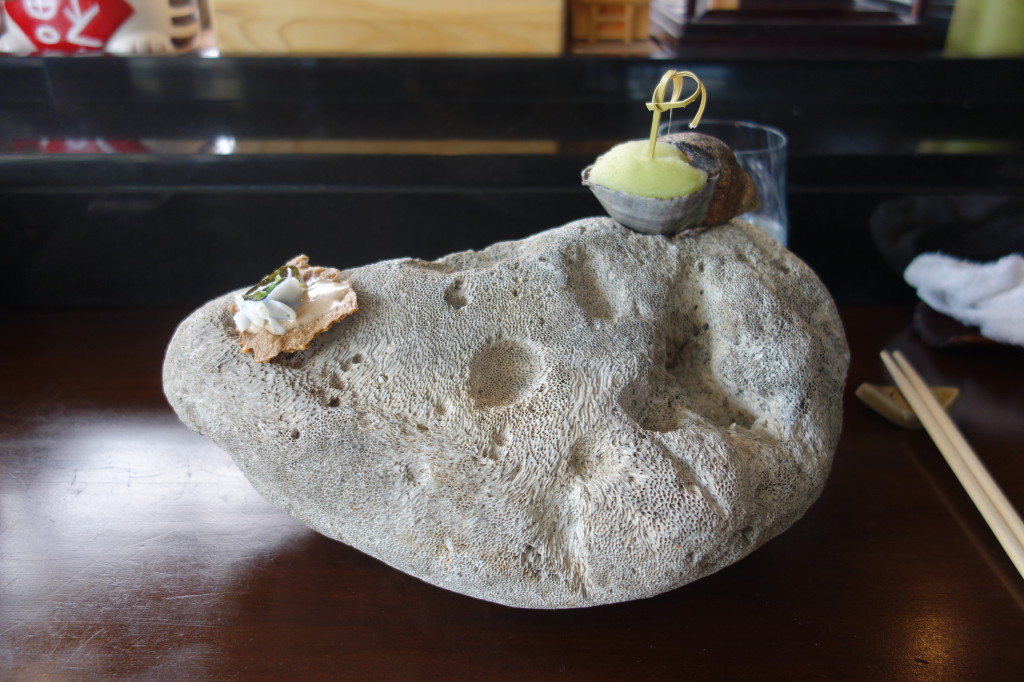
Ceviche is a staple in Lima, and the next course was a faithful interpretation of ceviche. Deliciously acidic, bright, salty with fresh fish. Very solid.
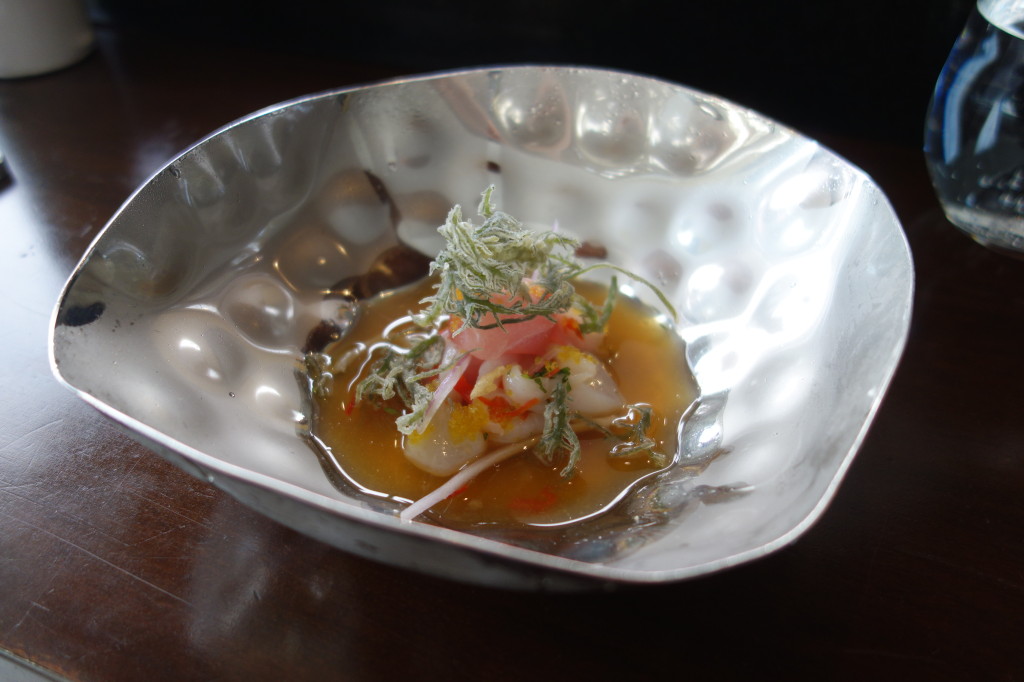
The next course had a bit of show with it, as it came in a smoke filled bell that was released when set down (you can still see the smoke in my picture). While the individual elements of this dish were too much on their own–like the gobo was too sweet and the sauce was too creamy–they blended together well.
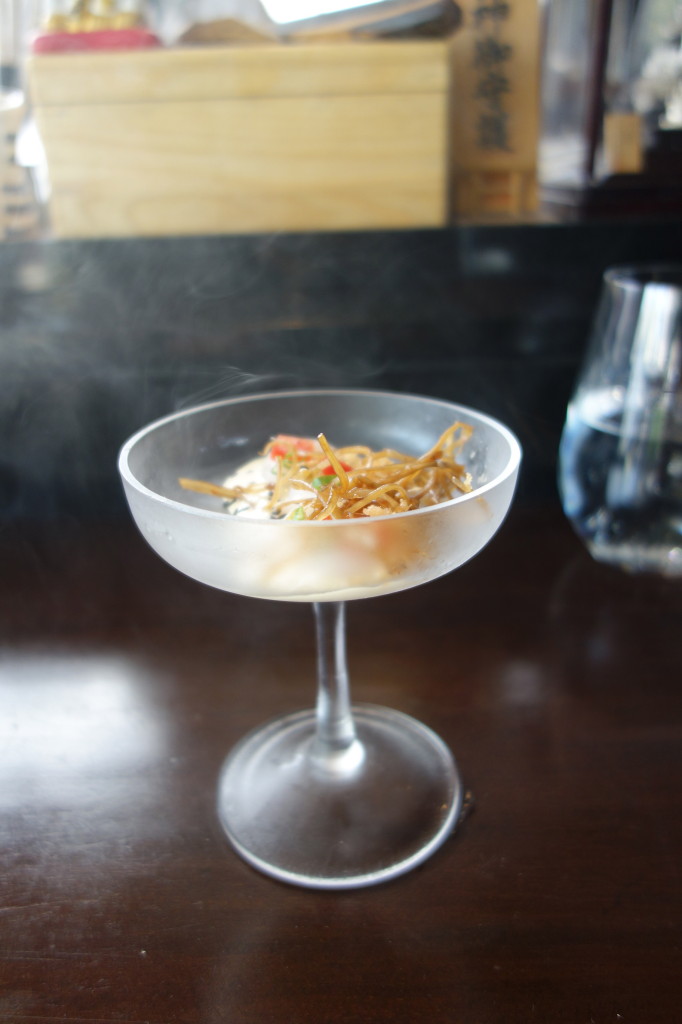
A fish sandwich was next, which was comforting and delicious. Fried monkfish, tartar sauce, a couple of vegetables for crunch and freshness, and a tasty bun.

Cuy (aka guinea pig) was also on my list of things to eat in Peru, so I was glad to be served a cuy confit. Honestly, it tasted like most other meat. The noodles were substituted with a sweet potato, but I still enjoyed them and they had a good kick. Again, the individual components were a bit much on their own, but they balanced each other out when eaten together.
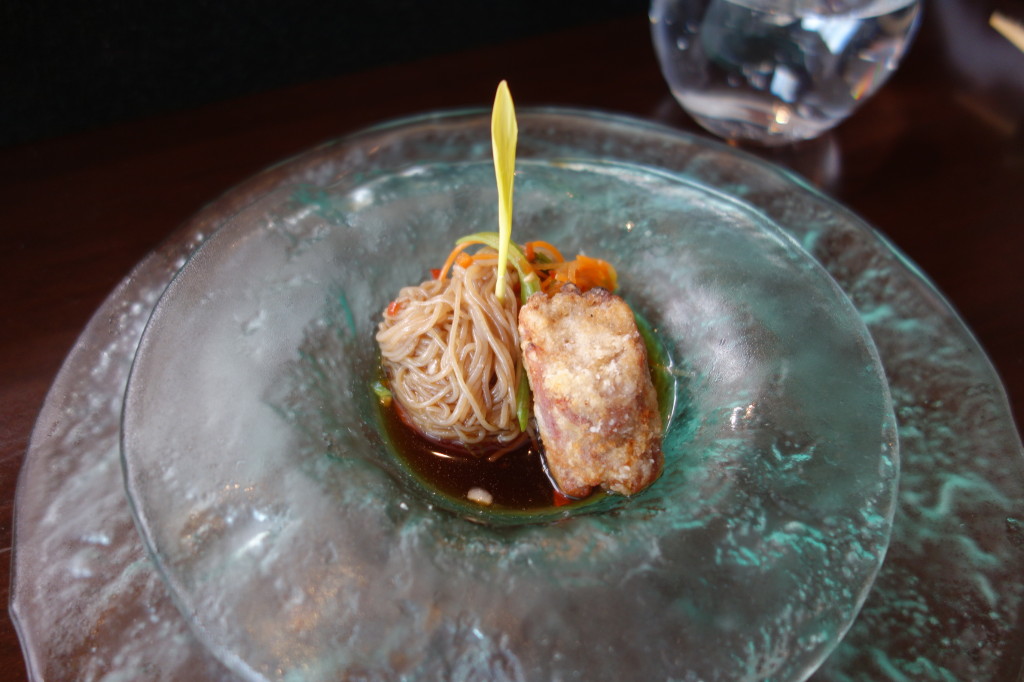
This was an unconventional take on ceviche. Essentially, they took the ceviche sauce and froze it using liquid nitrogen. For me, this dish was more interesting in concept than in execution. The sauce was very strong, and I don’t think the flavors of the fish or corn were really able to come through.
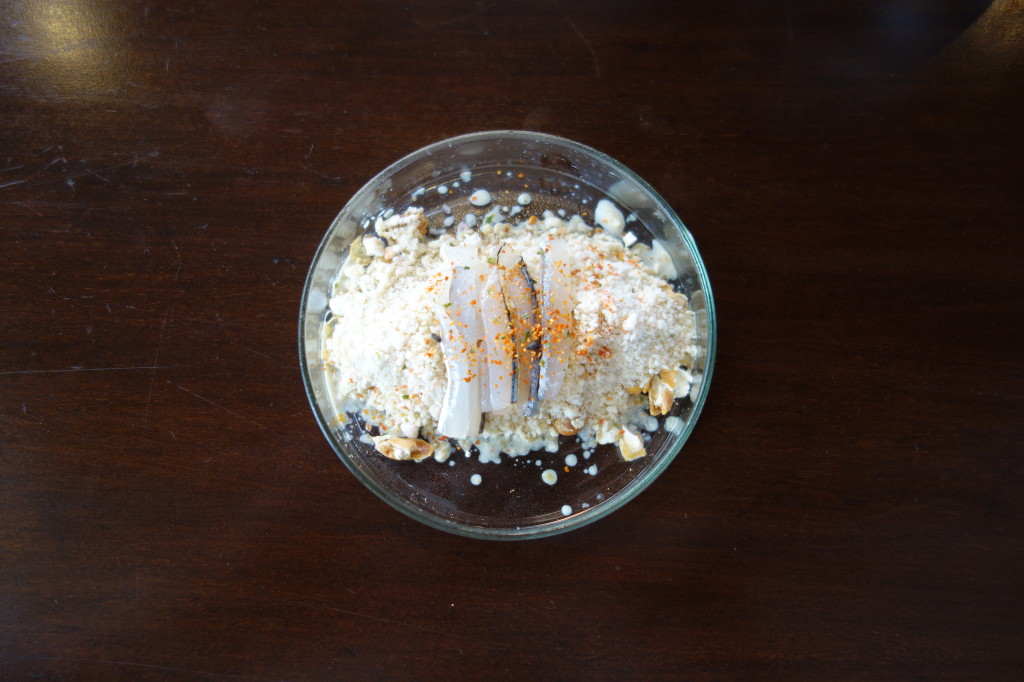
The first set of nigiri that I got was nigiri from the sea. The smoked mackerel was great without being too smoky (my usual complaint about smoked foods). There was a good balance with the sauce and the onions. The other piece was fried conger eel, which was surprisingly sweet and didn’t really seem like eel to me.
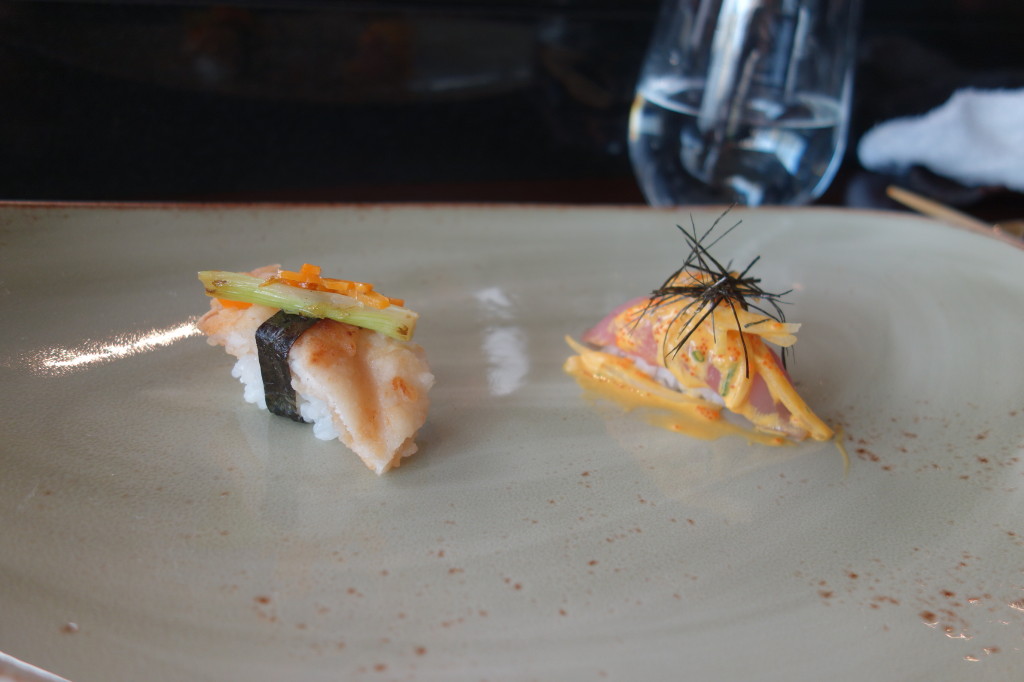
Next up was a rice tamale with pancetta on top, served with some cocona pepper. The tamale was creamy, the pig was tender, and the pickled peppers were crunchy. The accompanying sauce also reminded me of Mexican food.
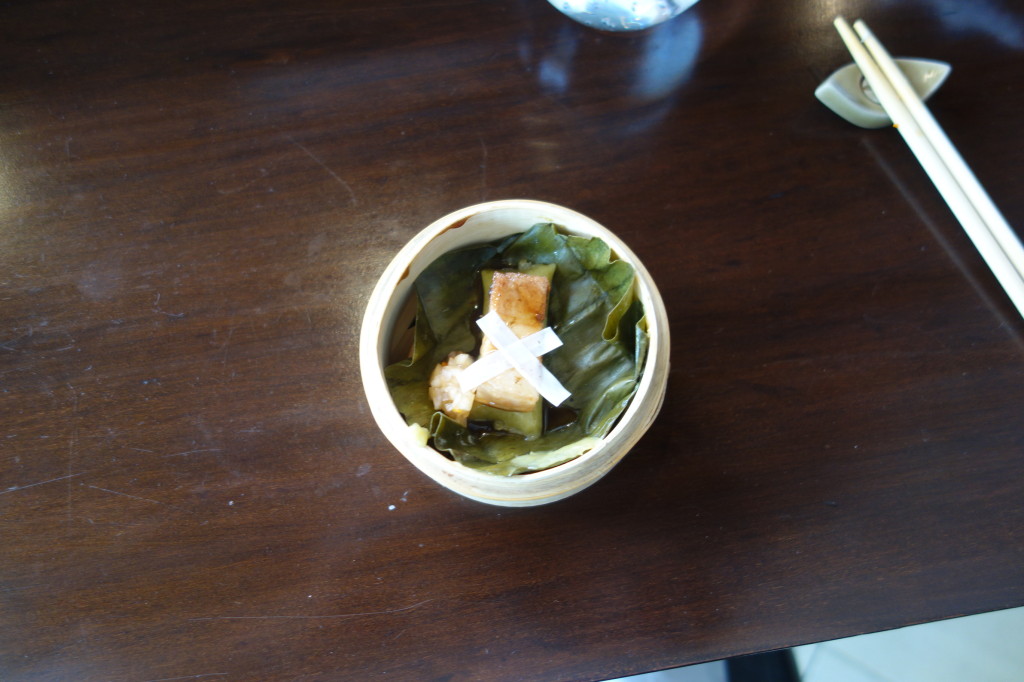
A take on chawanmushi was next. Savory delicate custard with crab instead of river prawn since the latter is now apparently protected by law. While I’m sure that others would love this course, it was a bit forgettable for me.
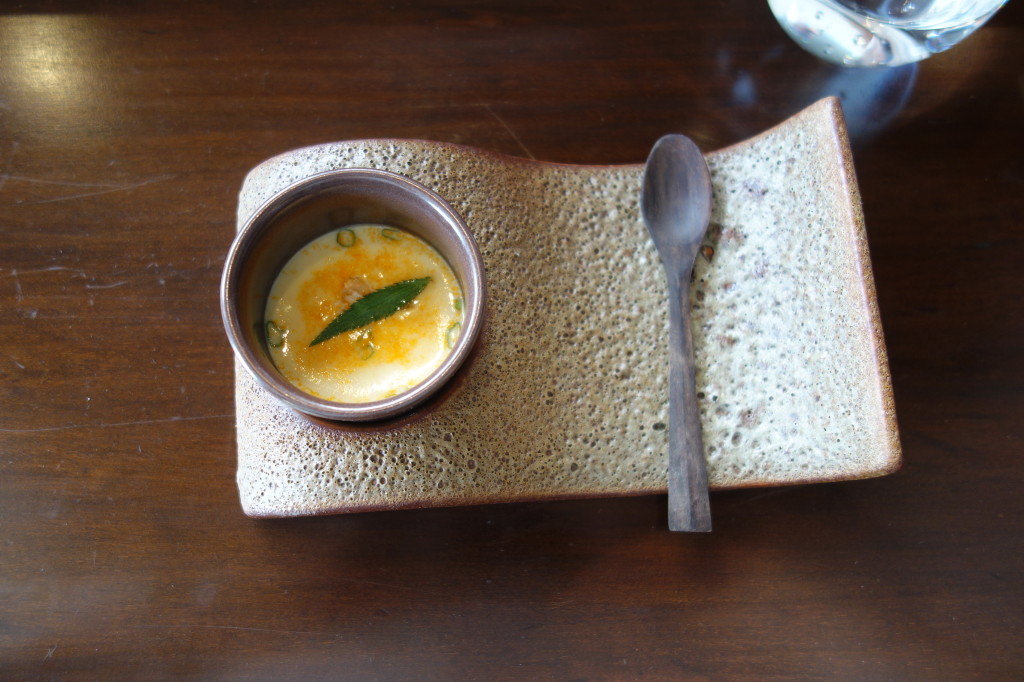
Then the set of nigiri from the earth. The rice was deliciously seasoned, and I loved the delicate quail egg, although the beef was a bit charred and overcooked. The pancetta nigiri was a bit touch and chewy, so it was forgettable. The peking duck nigiri was definitely interesting, given the crispy duck skin with sweetness from the hoisin and just a hint of leek.
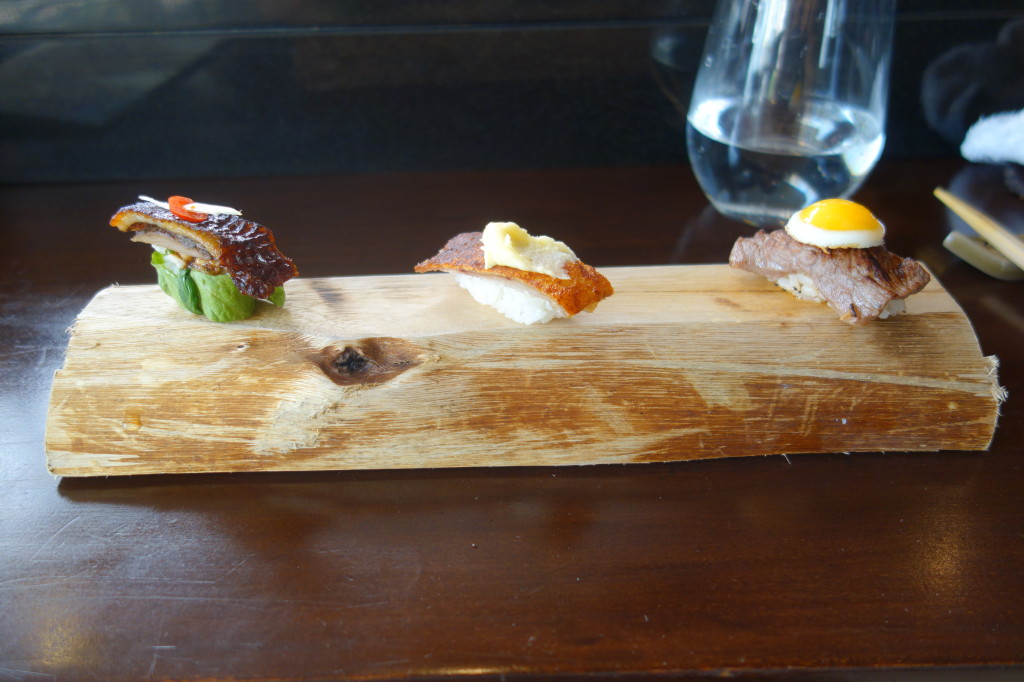
Next was black cod served with potato cream, baby corn, and a potato chip. The black cod was served in typical Japanese fashion, but the potato cream provided a brightness and creaminess that was a great contrast. Again, the individual components were a bit heavy-handed, but the combination was great.

The next course was simple in concept but well-executed and crazy tasty. Braised short rib on top of fried rice. The short rib was tender and savory and fatty without tasting like a heart attack. The fried rice was competent, and the pickled ginger provided a nice complement to cut through some of the savoriness.
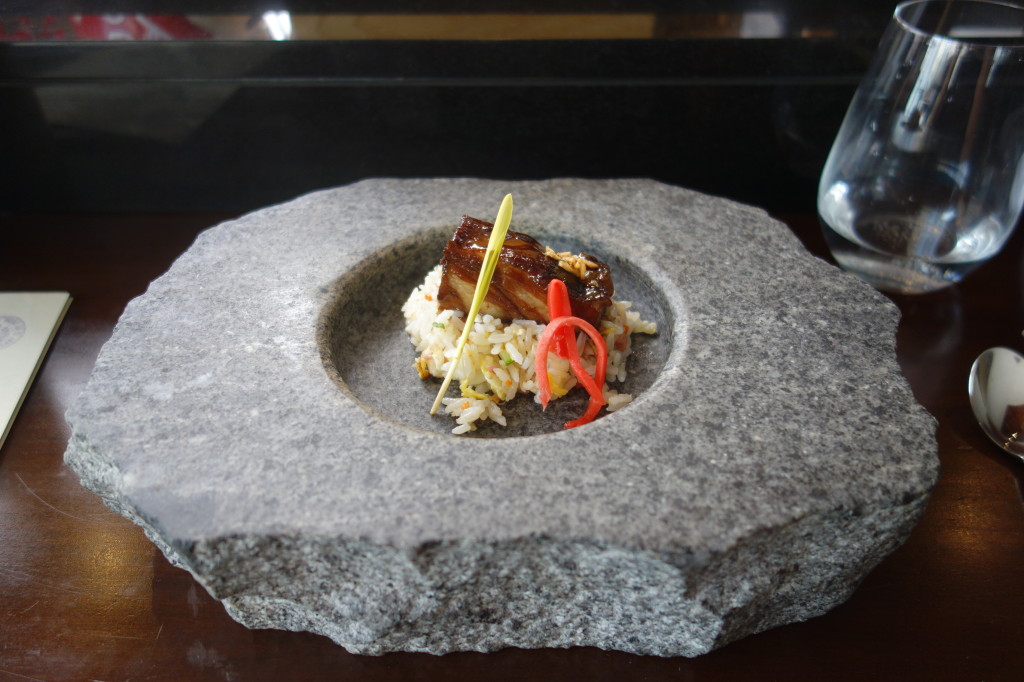
Finally, the first of two desserts. This was ice cream served with various toppings. I know I’ve railed in the past against sundaes, but the toppings here were incredible. The mango was intensely flavorful and better than any mango I’ve ever had in the US. The mochi was just about the best mochi I’ve ever had. The nuts were a good complement, and the milk on top added that je ne sais quoi. Great dessert.
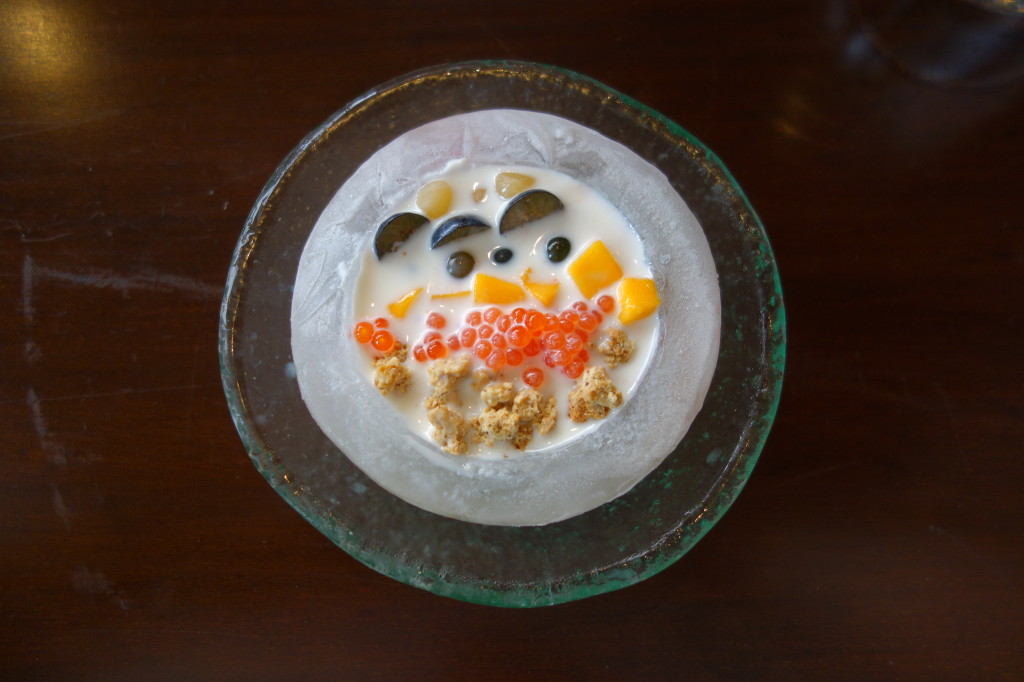
The last bite looked like sushi, but they used chocolate instead of seaweed (although there was also seaweed there) and tapioca instead of roe. There was also mango, cream, and nuts. I enjoy it when chefs play with our expectations, and the inclusion of actual seaweed made it all the more interesting.
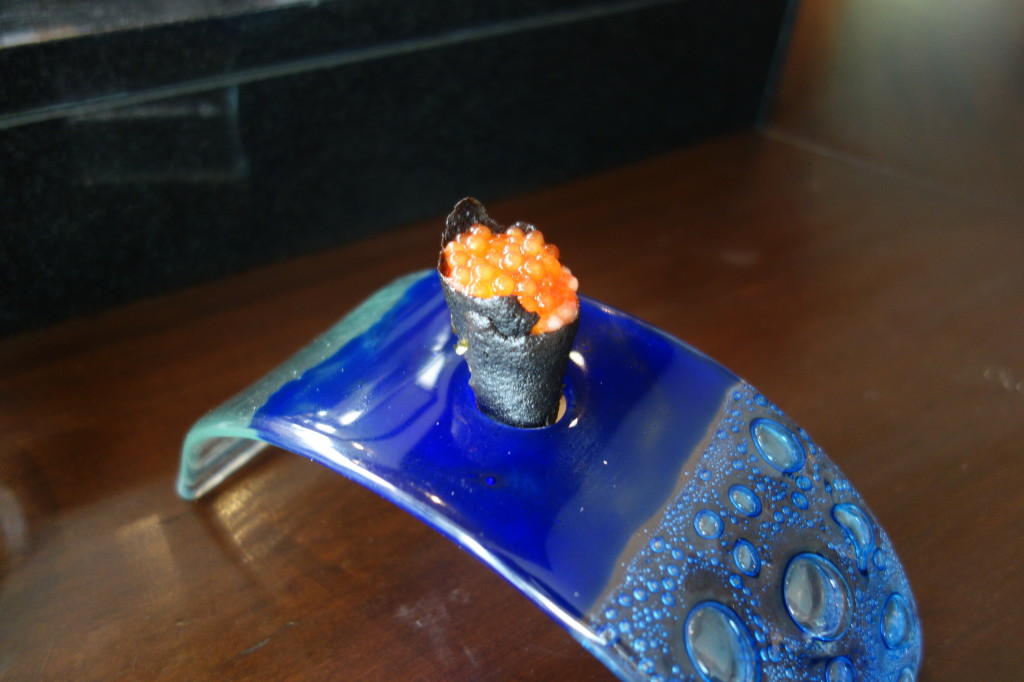
Altogether, the meal took around 2 hours, and the service was really rushing the courses to get through them all (not necessarily in a bad way). My server was quite good (he appeared to be the maitre d’ or equivalent), and he was able to explain all of the courses in detail, but the overall level of service at the restaurant did not appear very high given the quality of the food (perhaps because I was there for a lunch service instead of a dinner service). As a trivial aside, this was the second fancy restaurant I had been to that month where one of the waitstaff seriously needed a breath mint…
Maido is a great introduction to Japanese-Peruvian fusion, and this was a fusion restaurant where I felt that the food was actually delicious and not just gimmicky. The total cost was 320 soles for the Nikkei tasting menu, 8 soles for a glass of gassy water, and 10% for tip (about $130 USD, although I see on the website that this same menu is now 370 soles roughly 6 months later). I thought this was a good price for the quality and novelty of the food, as this would easily be a $200 meal in a place like San Francisco. Personally, I enjoyed this restaurant more than Central (dining review coming shortly).
2 Comments